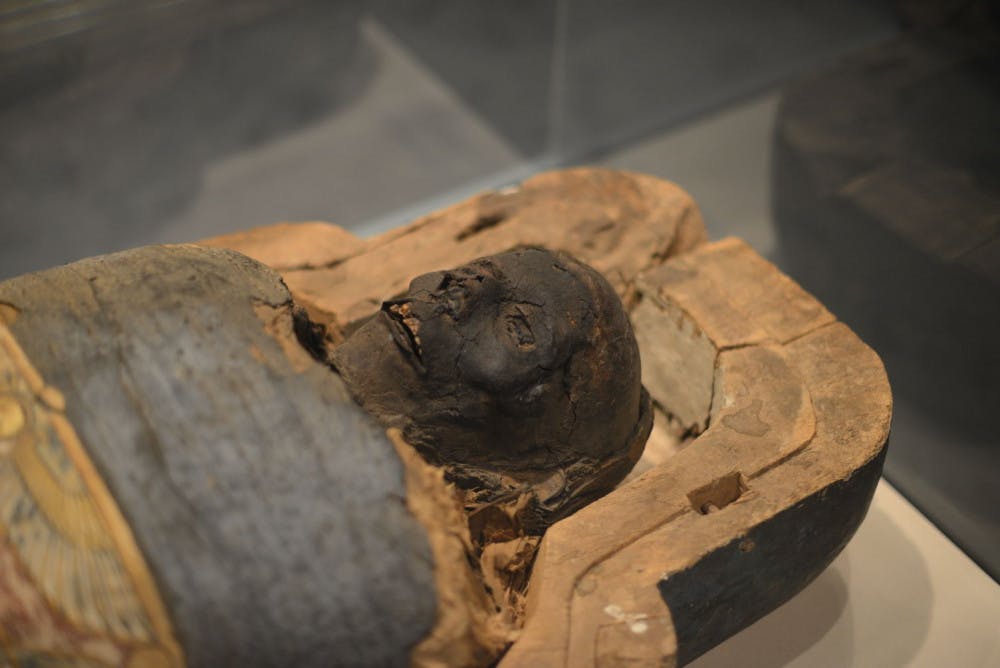Within the walls of the Communication and Fine Arts Building, tucked away in a dimly lit room, lies a mysterious man named Iret-Irew. He rests there day in and day out, never moving a muscle. How could he? His tightly wrapped, mud-colored clothes constrain every bone in his body. Surrounding him are items of the past — Cornucopia earrings, copper tweezers and a once shimmering bronze razor. He’s been dead for 2300 years.
The University of Memphis Art Museum’s Egyptian gallery houses more than 1400 artifacts, 200 of which are on permanent display. This collection of antiquities, including Iret-Irew, allows students to explore a period long gone.
Objects in exhibition range in date from 3800 B.C.E. to 700 C.E. The exhibit is free to students. Due to its namesake, Memphis has special connection with ancient Egypt. It wasn’t until the mid-1970s, though, that the University invested in preserving and studying the culture.
“[In the 1970s] there was a real enthusiasm for developing Egyptology in Memphis,” said Patricia Podzorski, the University’s curator of Egyptian art.
Prominent Memphis businessman E.H. Little plugged into the excitement and made a donation in 1975. Little’s contribution brought 44 pieces of Ancient Egyptian art to the University. Years passed and the multitude of artifacts continued to increase, with support from the Memphis Business Community.
“The collection has grown by generosity of donors mostly from Memphis,” Podzorski said.
There is a far-ranging amount on display for students, according to Podzorski, an Egyptologist with a degree in Egyptian art and archeology from Berkley University.
“You have wonderful things from daily life such as a comb, a mirror and a 4,000 year old loaf of bread,” she said. The exhibit also includes weapons for self-defense, such as daggers and spears.
“Egyptians lived in a real world where they had to defend themselves,” Podzorski said.
With more than 200 items on display, it may take students multiple trips to see them all.
“There’s so much there,” said Peter Longoria, a senior double major of history and anthropology. “It’s perfect for history and anthropology majors — it’s perfect for all majors. Every student should see it.”
Incoming freshman Musa Banat plans on paying a visit.
“I am without a doubt excited to see the exhibit,” he said.
Interested students should hurry. The exhibit will temporarily close for three to four months of renovations after Sept. 19.
“Every student should experience the mortality of looking into the eyes of a mummy,” said Lawrence Parawan, a U of M senior and double major of premed and political science.
Visitors can expect to find approximately 200 ancient Egyptian objects from the permanent collection of the Institute of Egyptian Art and Archaeology, on display in the Egyptian Gallery of the Art Museum at the University of Memphis. The museum is open to the public Monday through Saturday from 9 a.m. to 5 p.m. free of charge.






